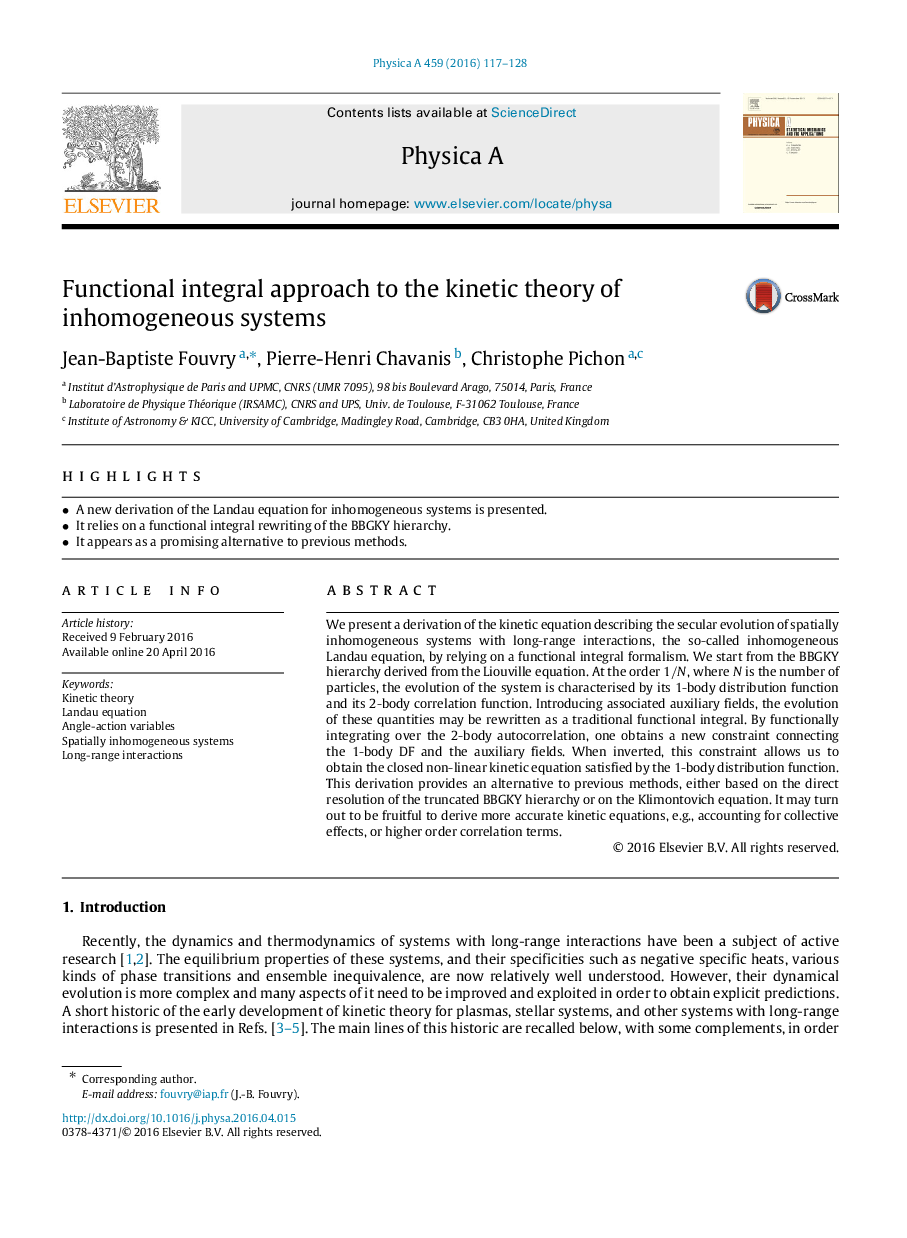| Article ID | Journal | Published Year | Pages | File Type |
|---|---|---|---|---|
| 974280 | Physica A: Statistical Mechanics and its Applications | 2016 | 12 Pages |
•A new derivation of the Landau equation for inhomogeneous systems is presented.•It relies on a functional integral rewriting of the BBGKY hierarchy.•It appears as a promising alternative to previous methods.
We present a derivation of the kinetic equation describing the secular evolution of spatially inhomogeneous systems with long-range interactions, the so-called inhomogeneous Landau equation, by relying on a functional integral formalism. We start from the BBGKY hierarchy derived from the Liouville equation. At the order 1/N1/N, where NN is the number of particles, the evolution of the system is characterised by its 1-body distribution function and its 2-body correlation function. Introducing associated auxiliary fields, the evolution of these quantities may be rewritten as a traditional functional integral. By functionally integrating over the 2-body autocorrelation, one obtains a new constraint connecting the 1-body DF and the auxiliary fields. When inverted, this constraint allows us to obtain the closed non-linear kinetic equation satisfied by the 1-body distribution function. This derivation provides an alternative to previous methods, either based on the direct resolution of the truncated BBGKY hierarchy or on the Klimontovich equation. It may turn out to be fruitful to derive more accurate kinetic equations, e.g., accounting for collective effects, or higher order correlation terms.
